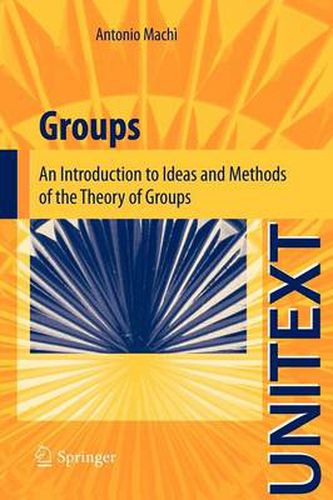Readings Newsletter
Become a Readings Member to make your shopping experience even easier.
Sign in or sign up for free!
You’re not far away from qualifying for FREE standard shipping within Australia
You’ve qualified for FREE standard shipping within Australia
The cart is loading…






This title is printed to order. This book may have been self-published. If so, we cannot guarantee the quality of the content. In the main most books will have gone through the editing process however some may not. We therefore suggest that you be aware of this before ordering this book. If in doubt check either the author or publisher’s details as we are unable to accept any returns unless they are faulty. Please contact us if you have any questions.
Groups are a means of classification, via the group action on a set, but also the object of a classification. How many groups of a given type are there, and how can they be described? Hoelder’s program for attacking this problem in the case of finite groups is a sort of leitmotiv throughout the text. Infinite groups are also considered, with particular attention to logical and decision problems. Abelian, nilpotent and solvable groups are studied both in the finite and infinite case. Permutation groups and are treated in detail; their relationship with Galois theory is often taken into account. The last two chapters deal with the representation theory of finite group and the cohomology theory of groups; the latter with special emphasis on the extension problem. The sections are followed by exercises; hints to the solution are given, and for most of them a complete solution is provided.
$9.00 standard shipping within Australia
FREE standard shipping within Australia for orders over $100.00
Express & International shipping calculated at checkout
This title is printed to order. This book may have been self-published. If so, we cannot guarantee the quality of the content. In the main most books will have gone through the editing process however some may not. We therefore suggest that you be aware of this before ordering this book. If in doubt check either the author or publisher’s details as we are unable to accept any returns unless they are faulty. Please contact us if you have any questions.
Groups are a means of classification, via the group action on a set, but also the object of a classification. How many groups of a given type are there, and how can they be described? Hoelder’s program for attacking this problem in the case of finite groups is a sort of leitmotiv throughout the text. Infinite groups are also considered, with particular attention to logical and decision problems. Abelian, nilpotent and solvable groups are studied both in the finite and infinite case. Permutation groups and are treated in detail; their relationship with Galois theory is often taken into account. The last two chapters deal with the representation theory of finite group and the cohomology theory of groups; the latter with special emphasis on the extension problem. The sections are followed by exercises; hints to the solution are given, and for most of them a complete solution is provided.